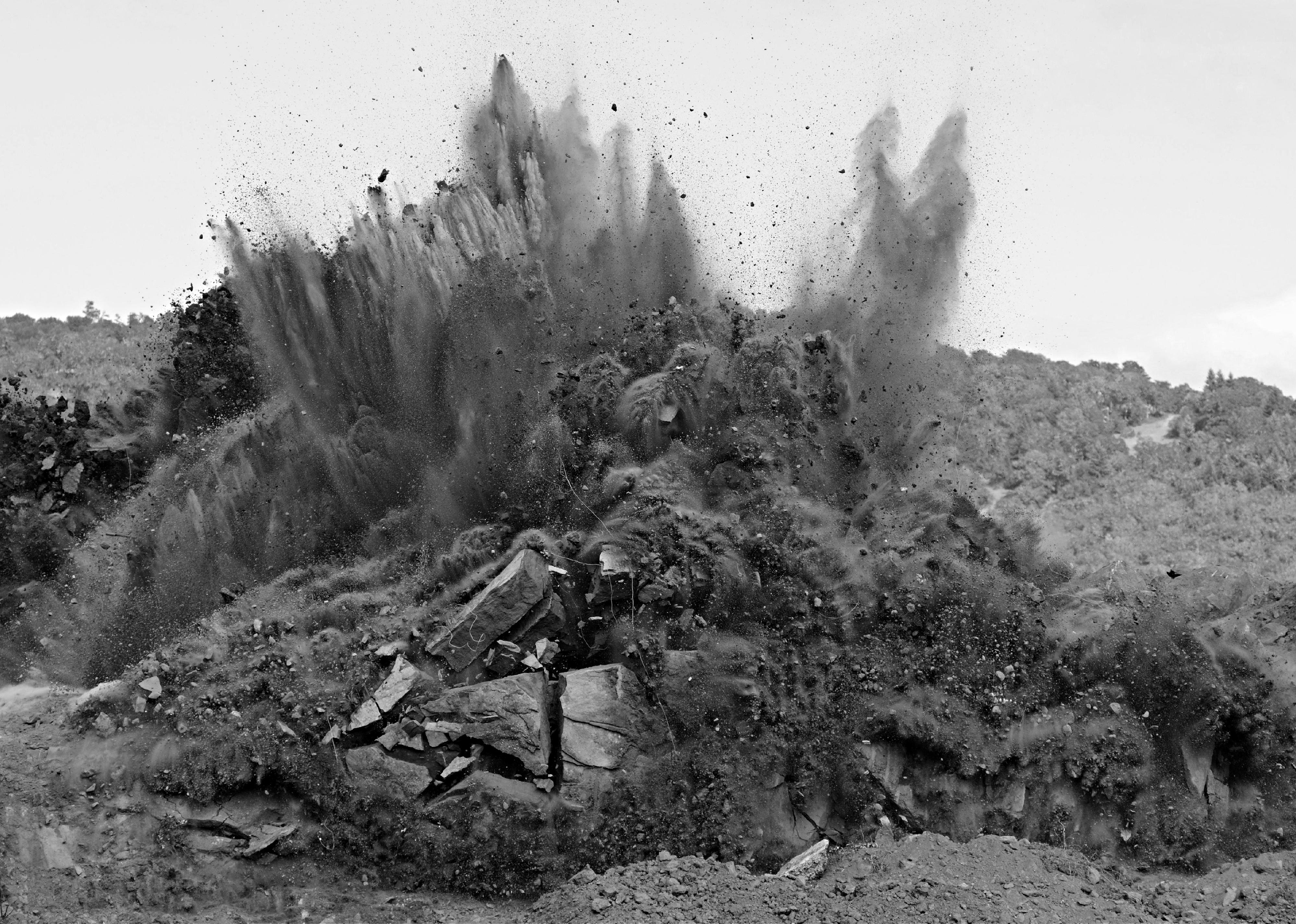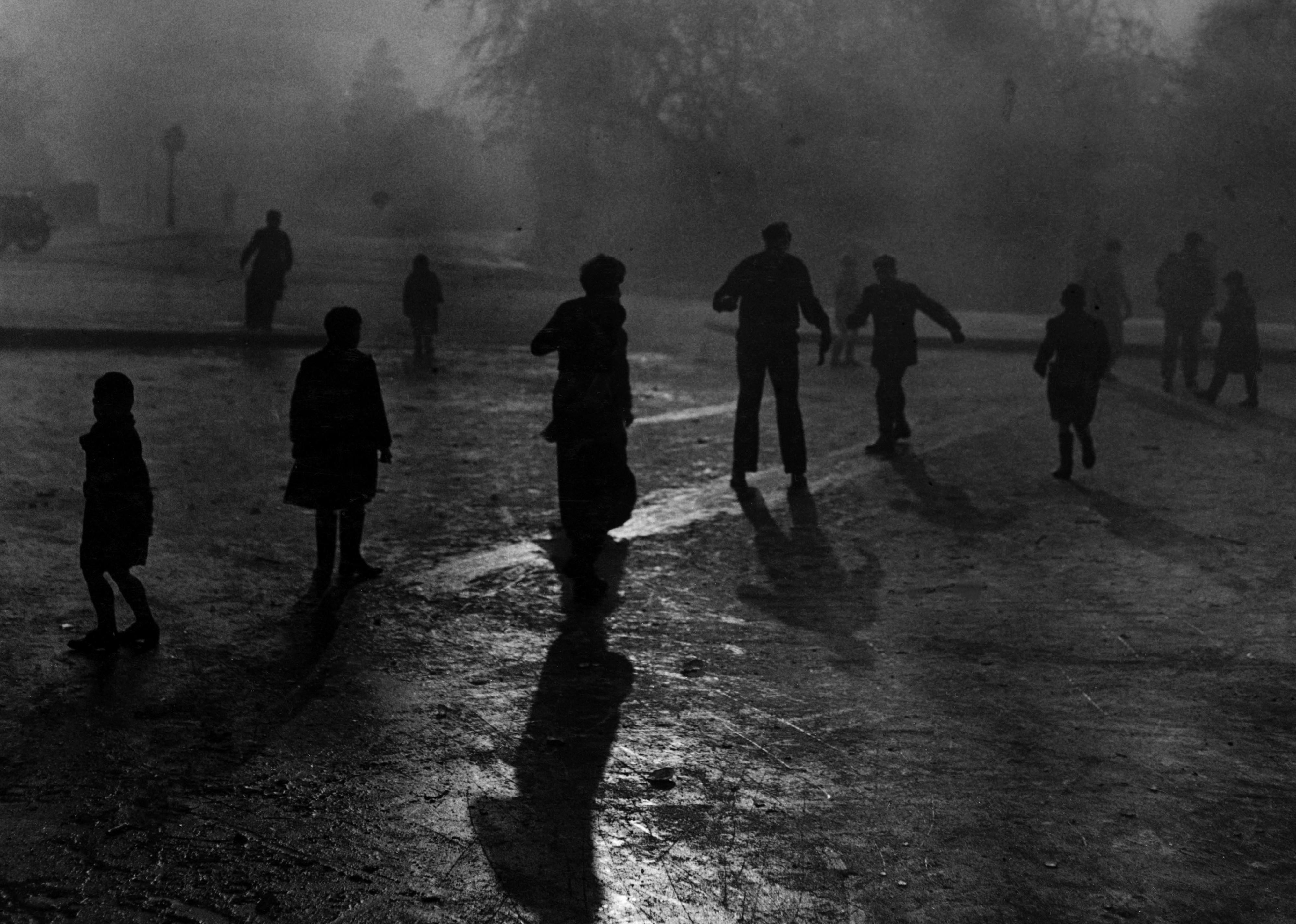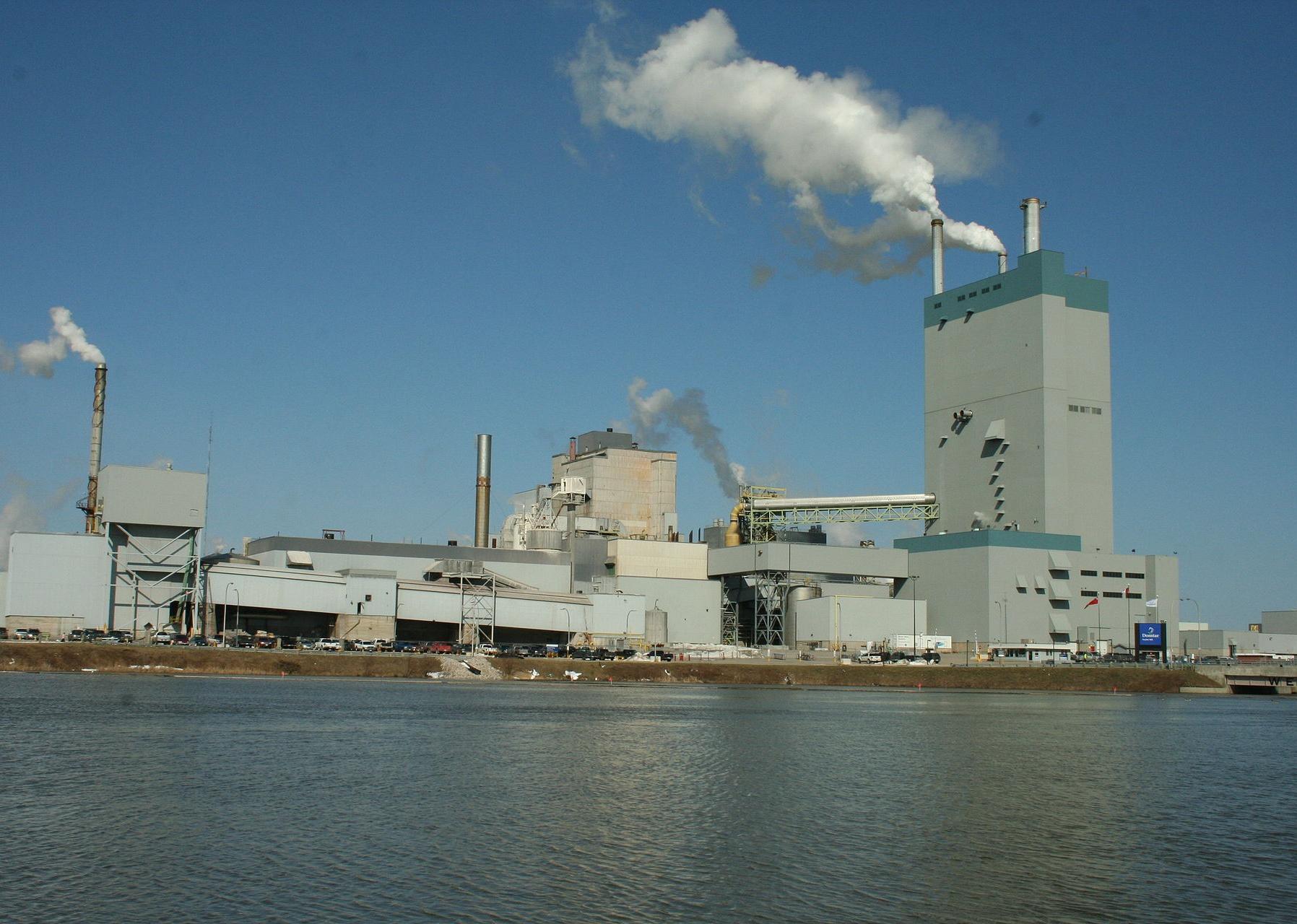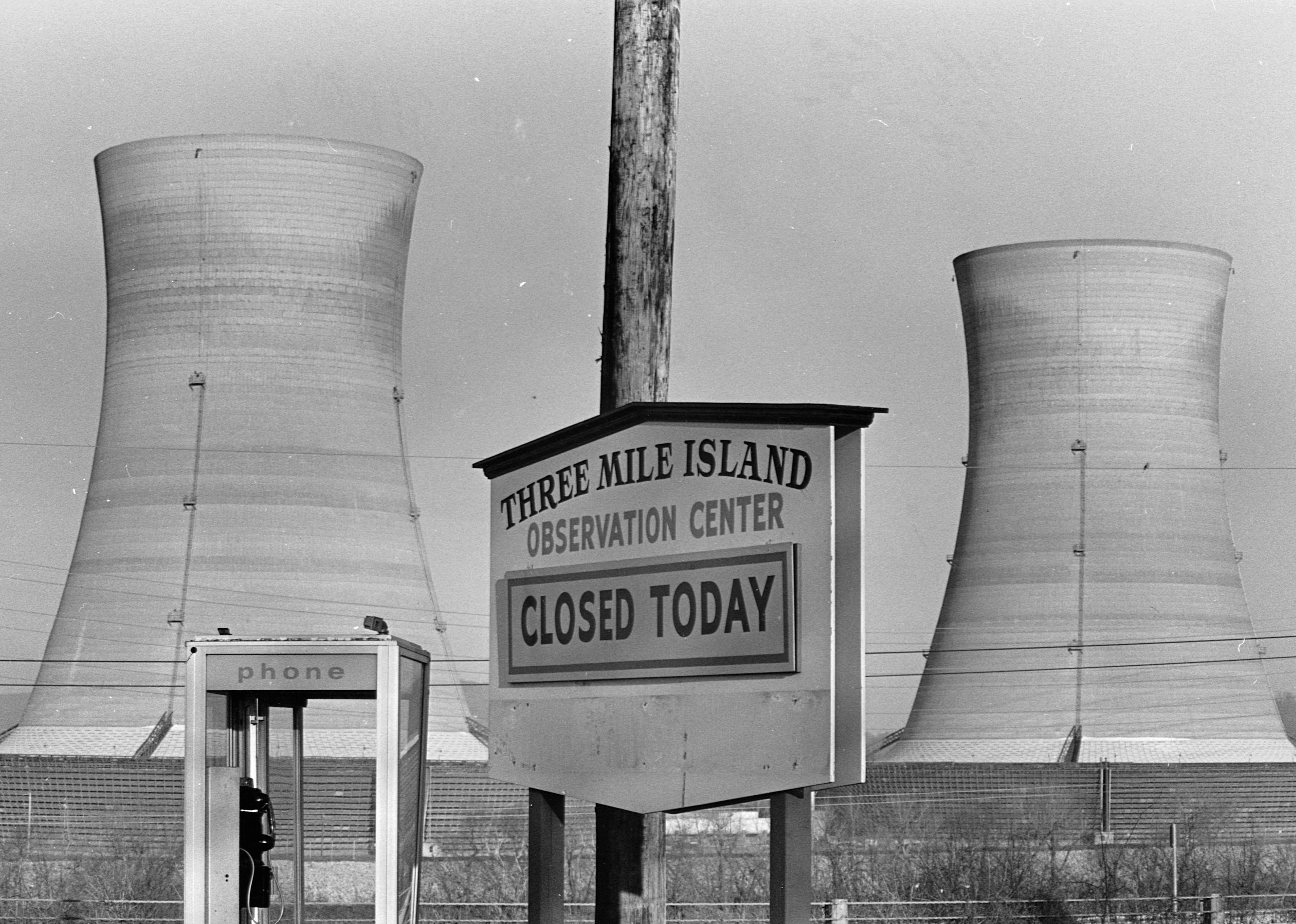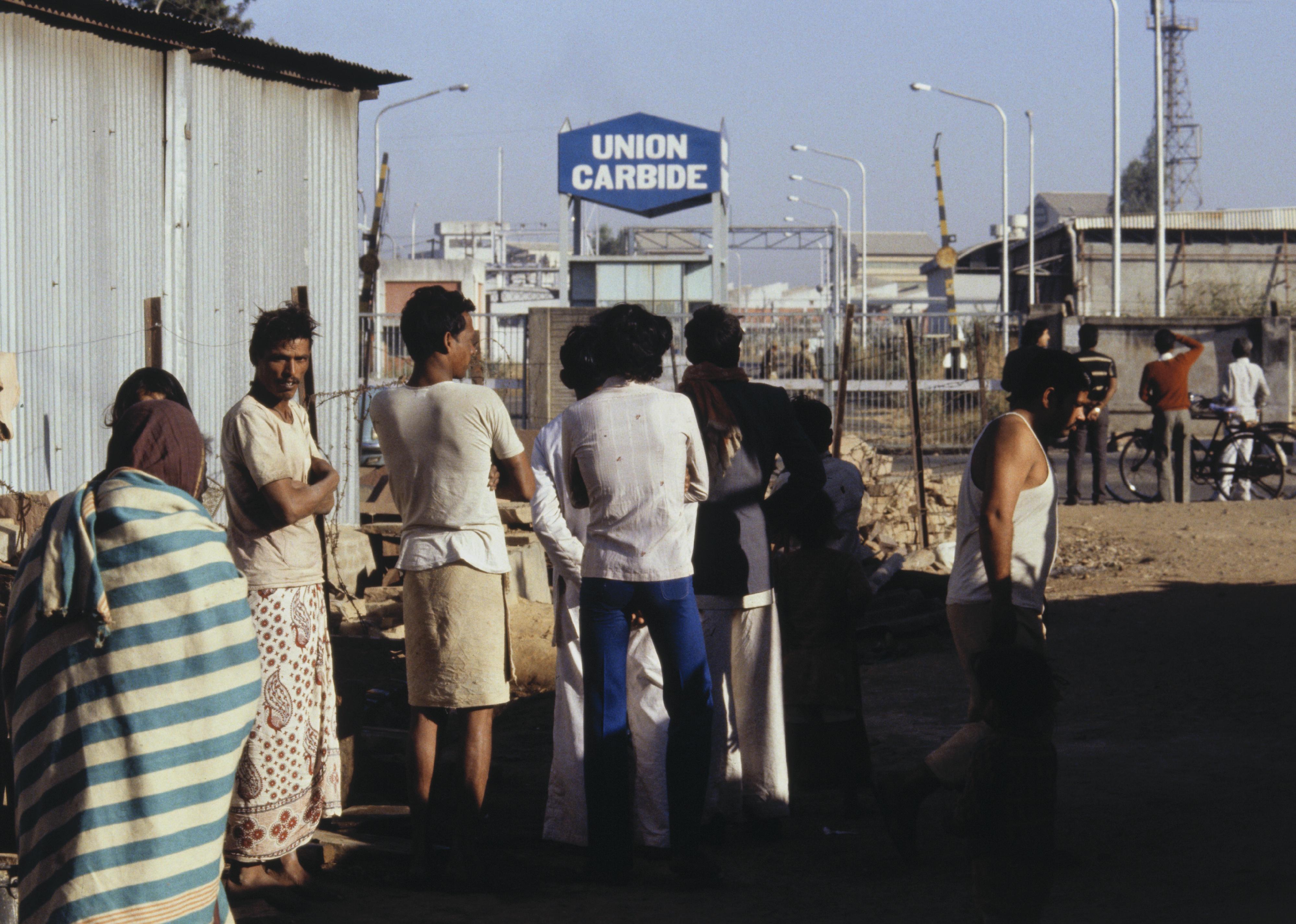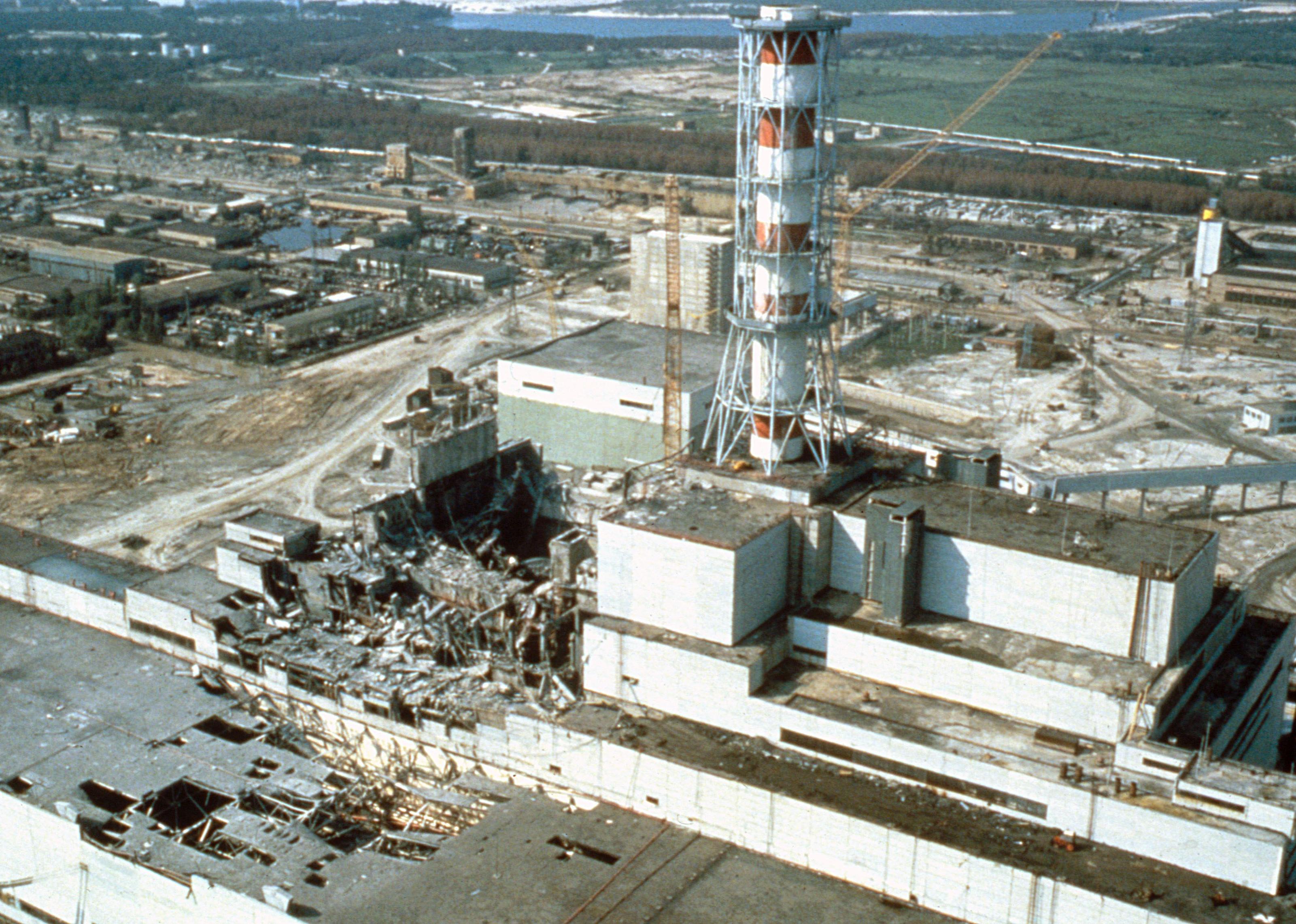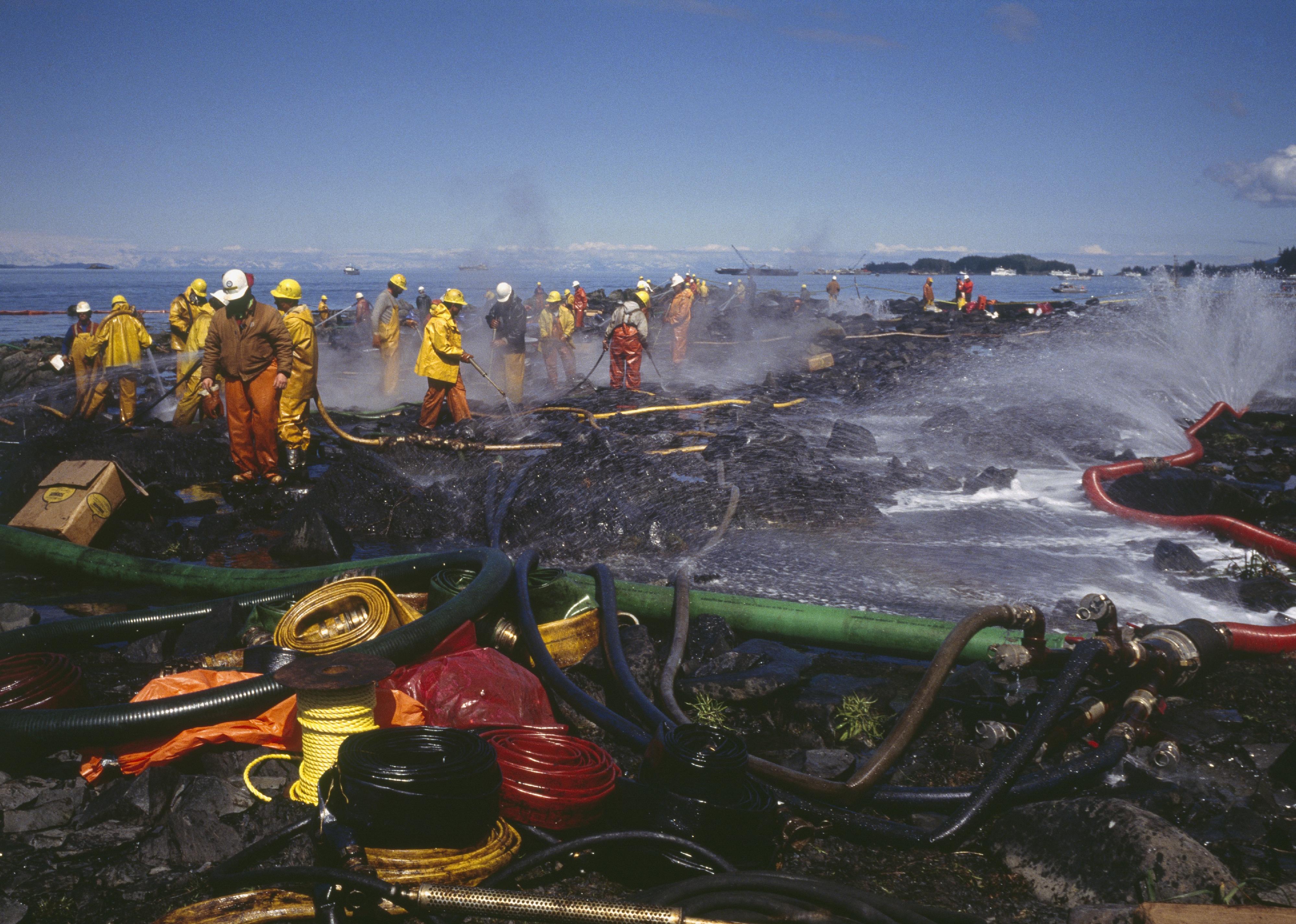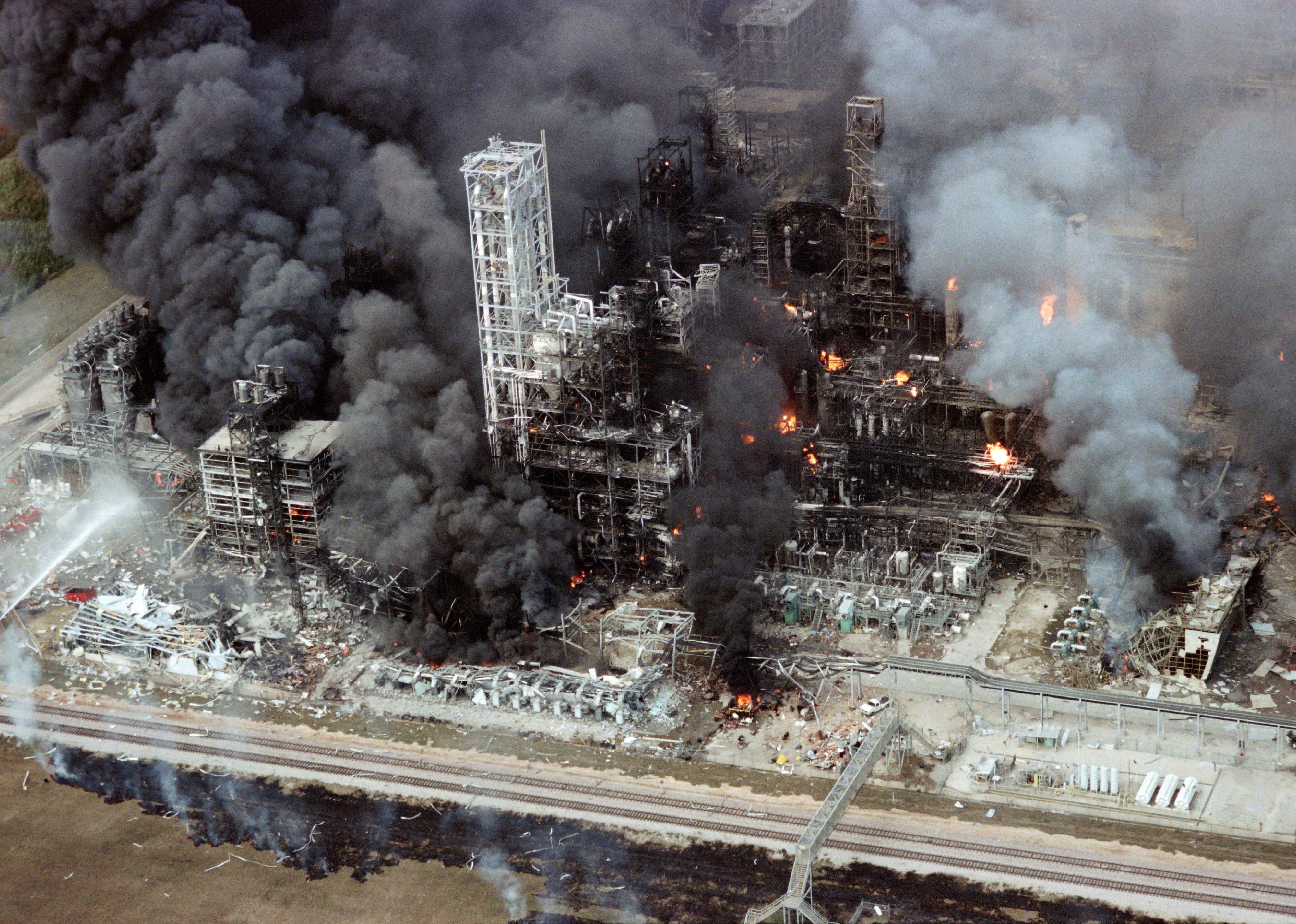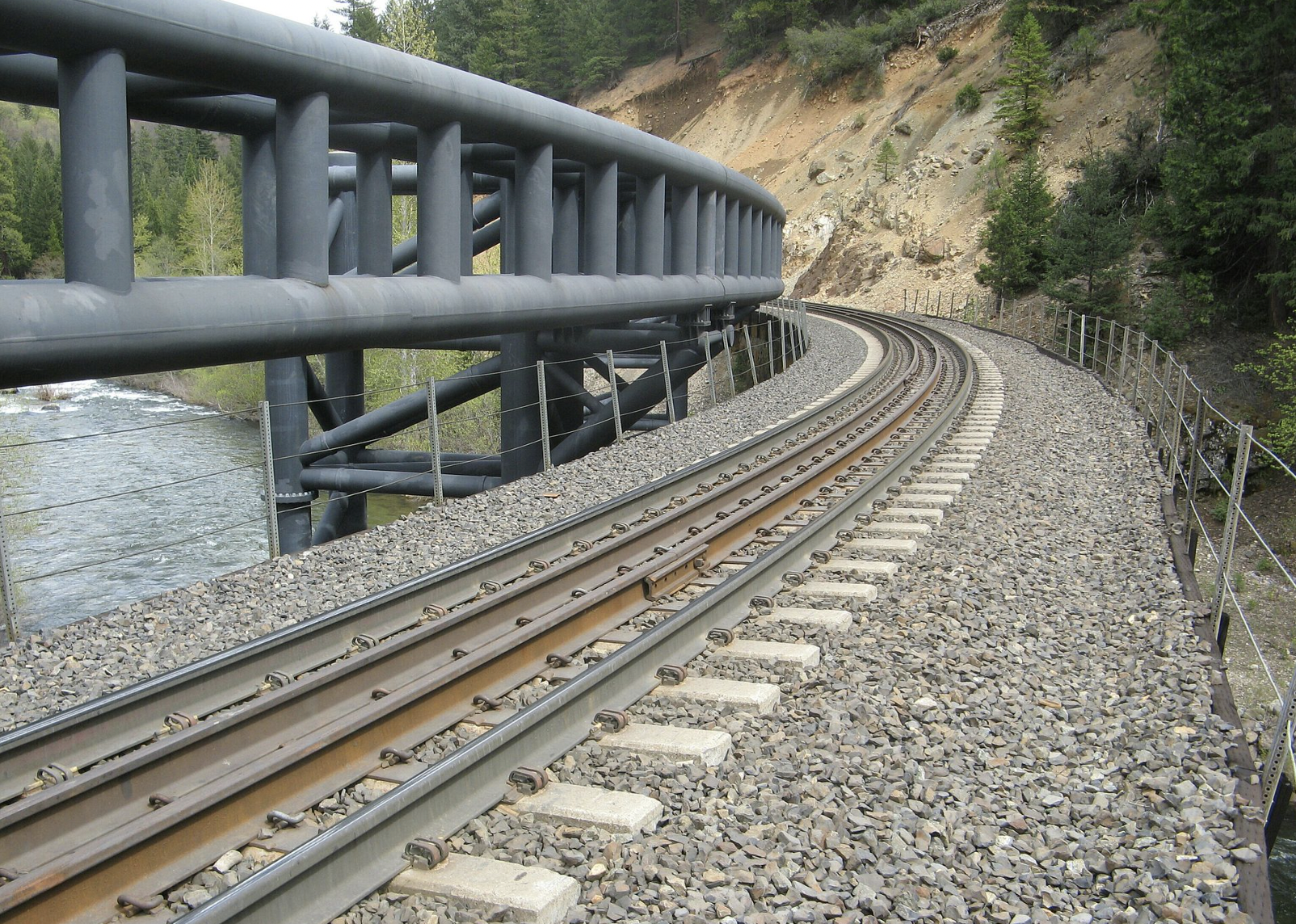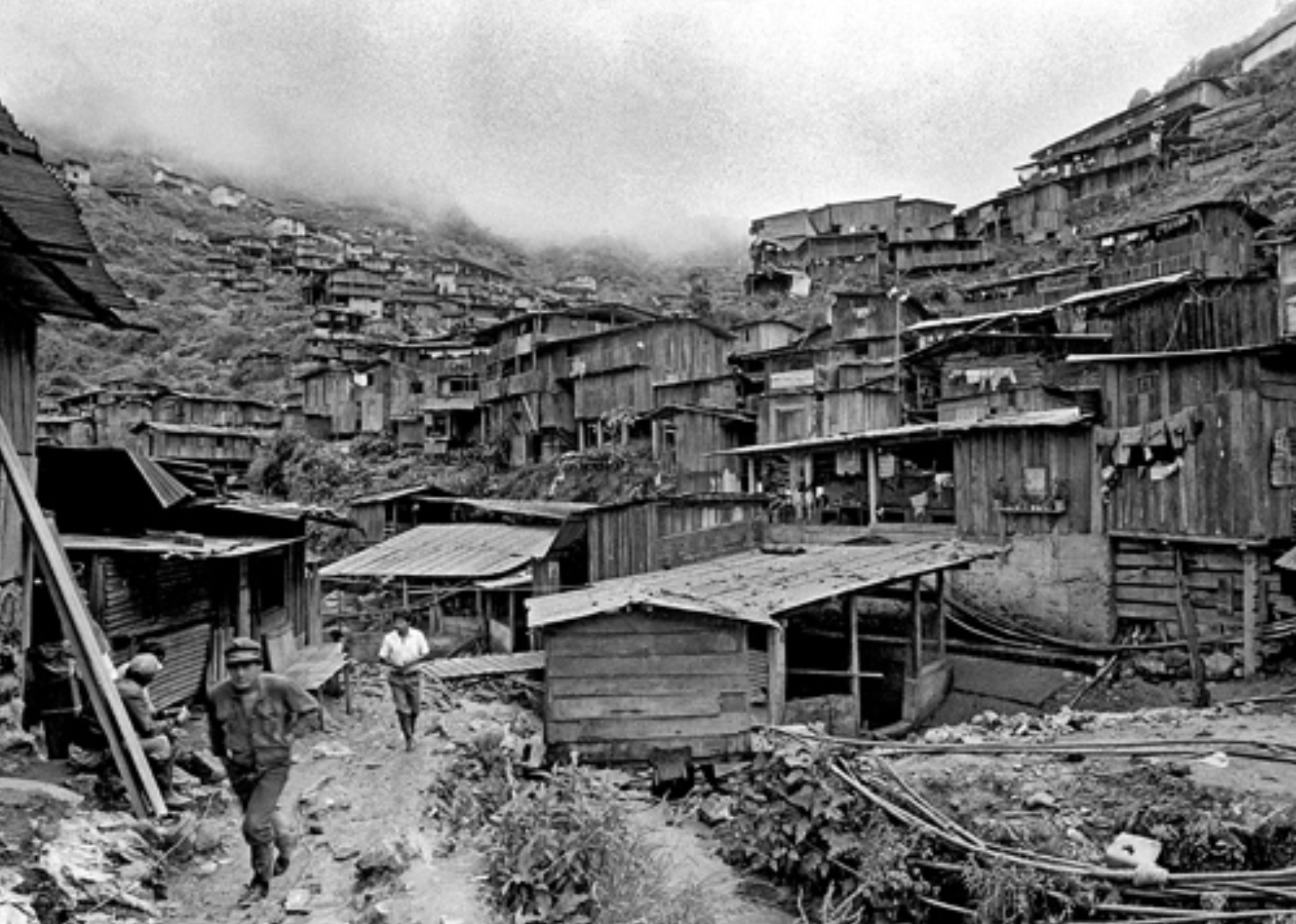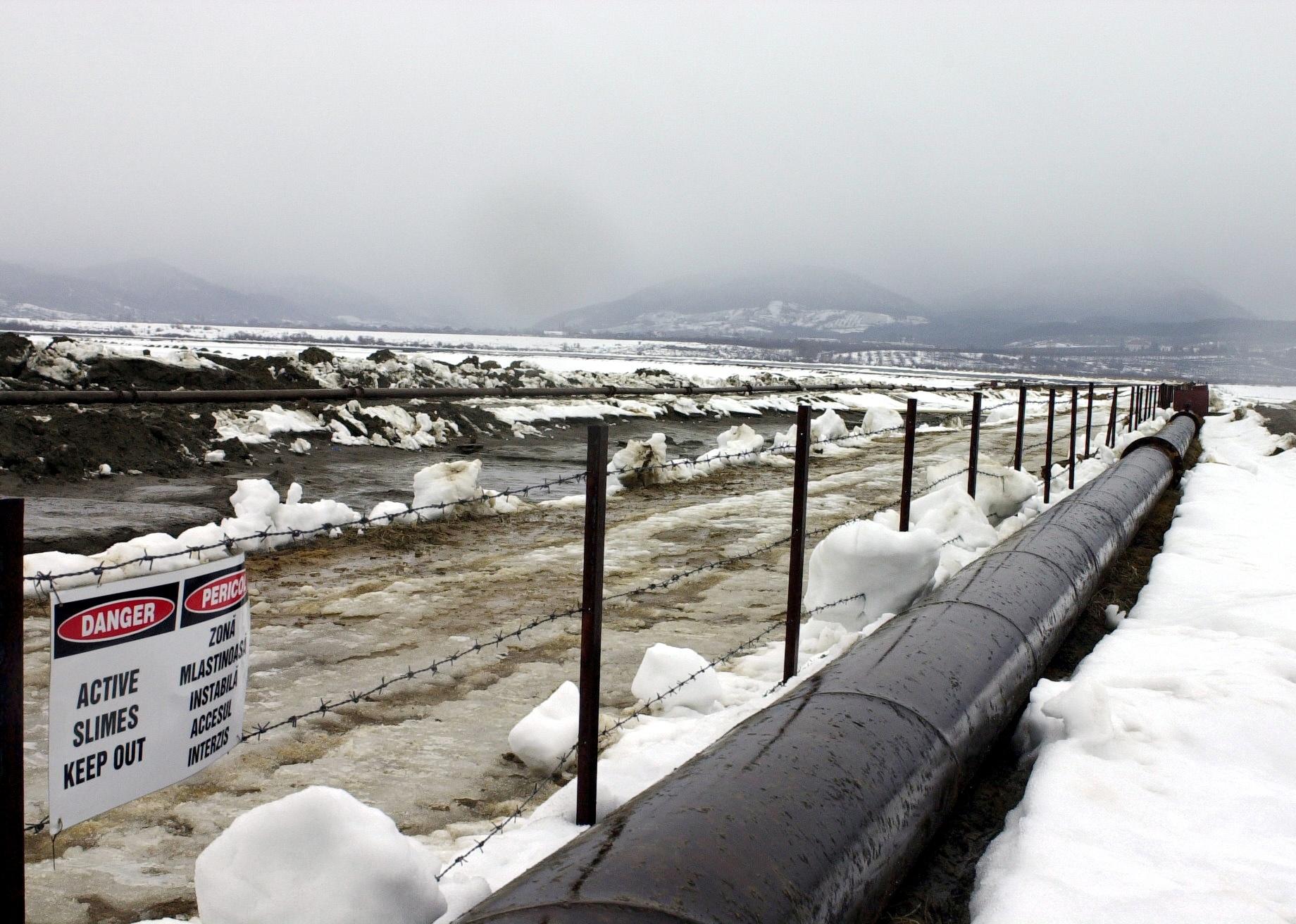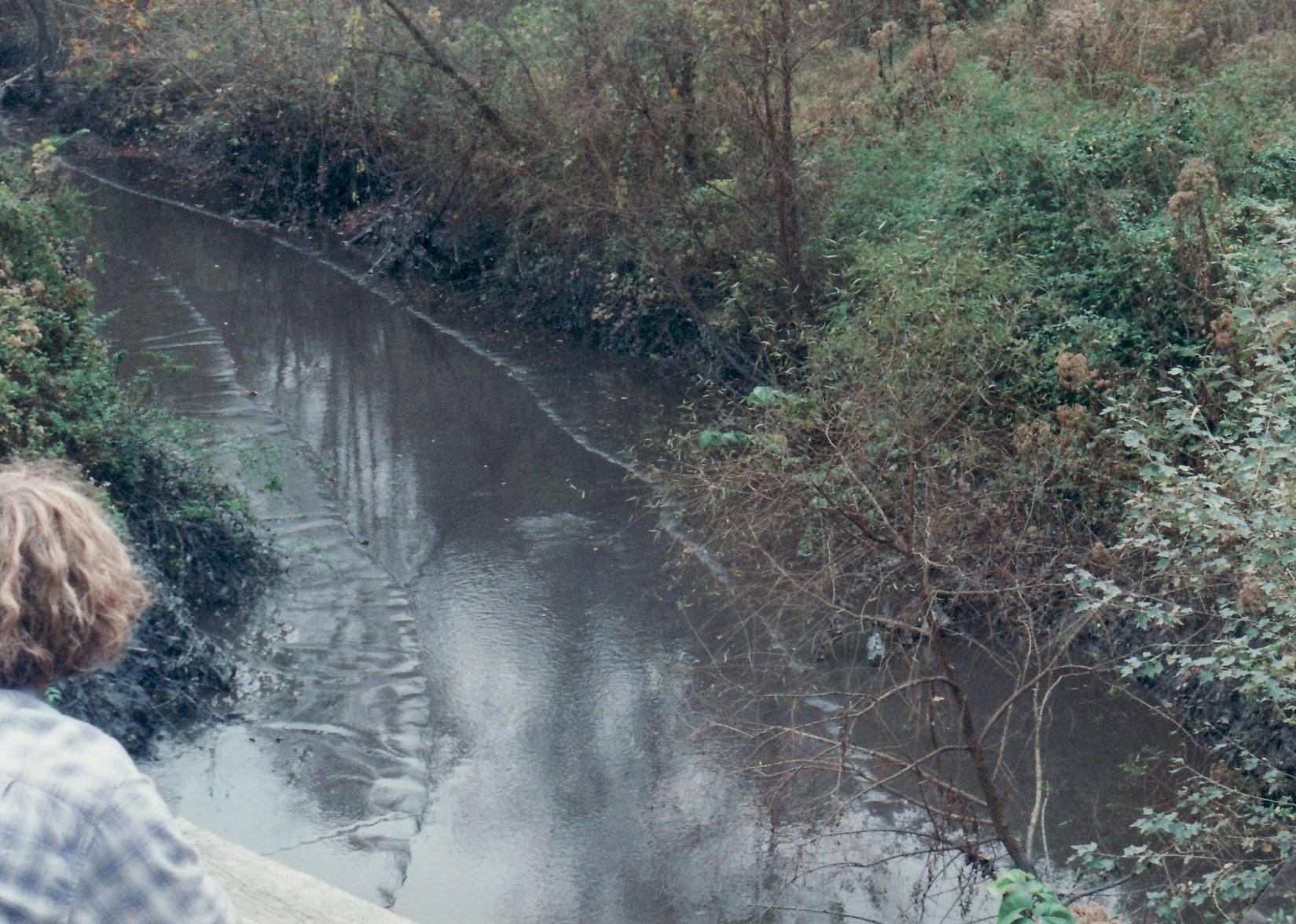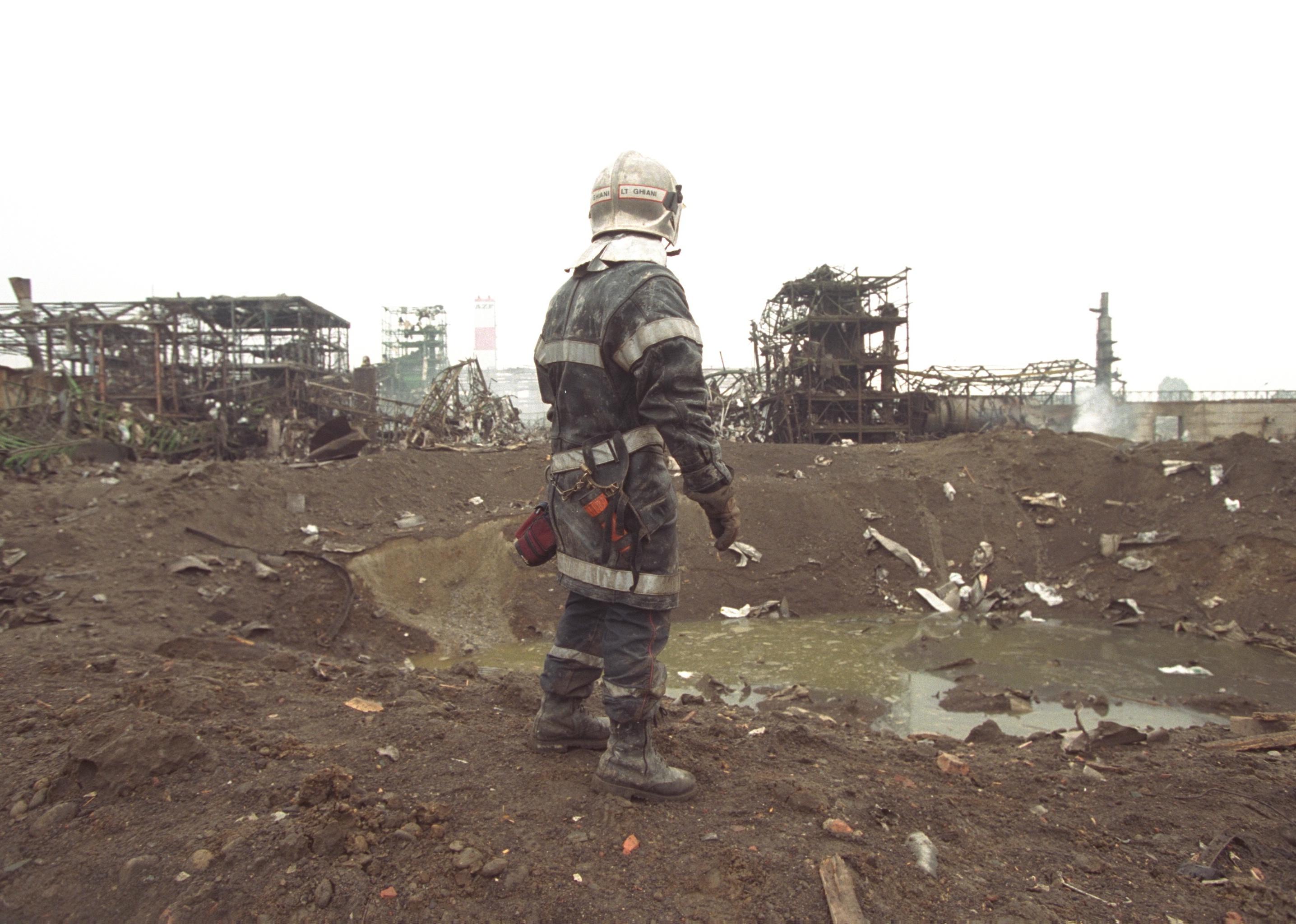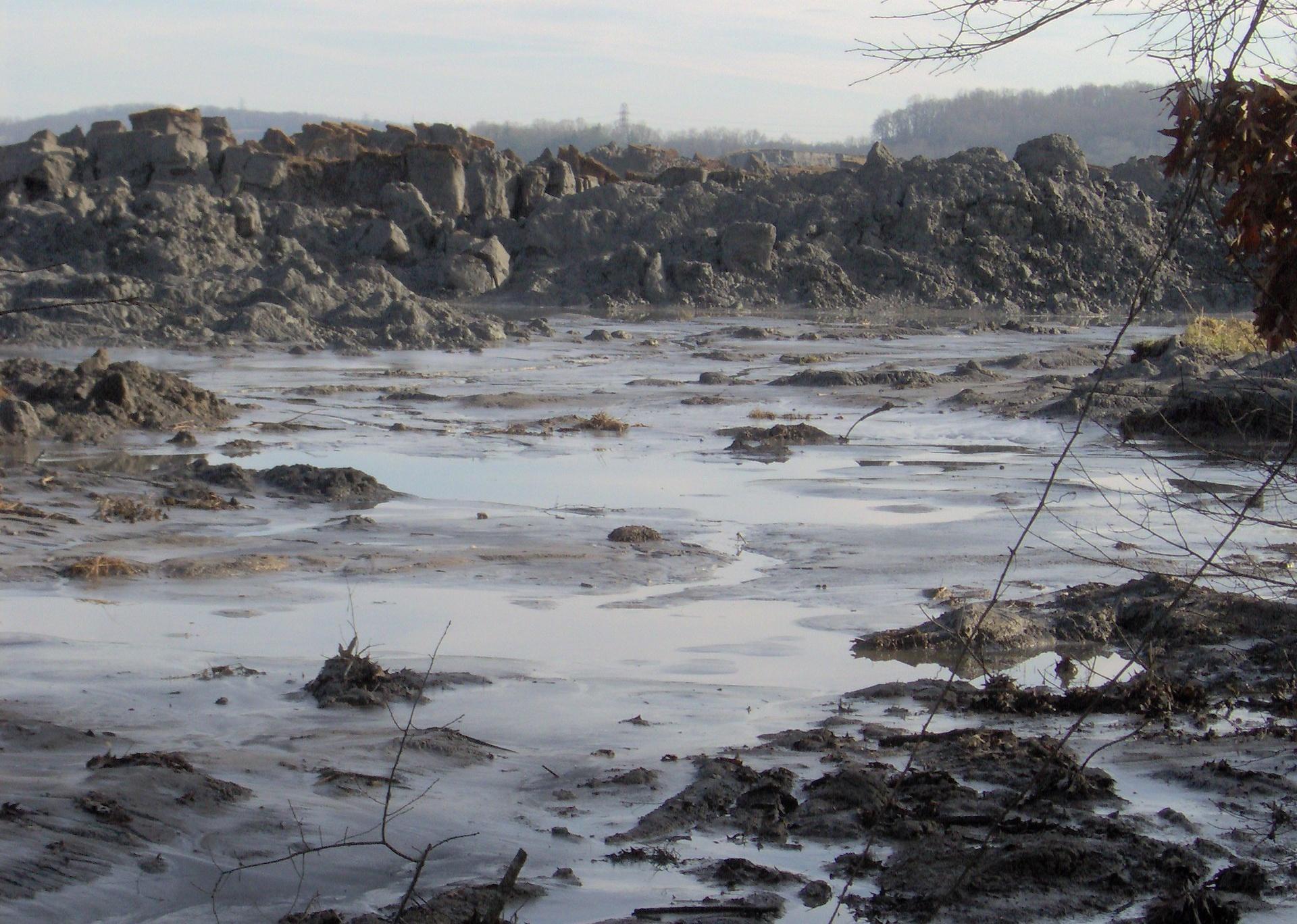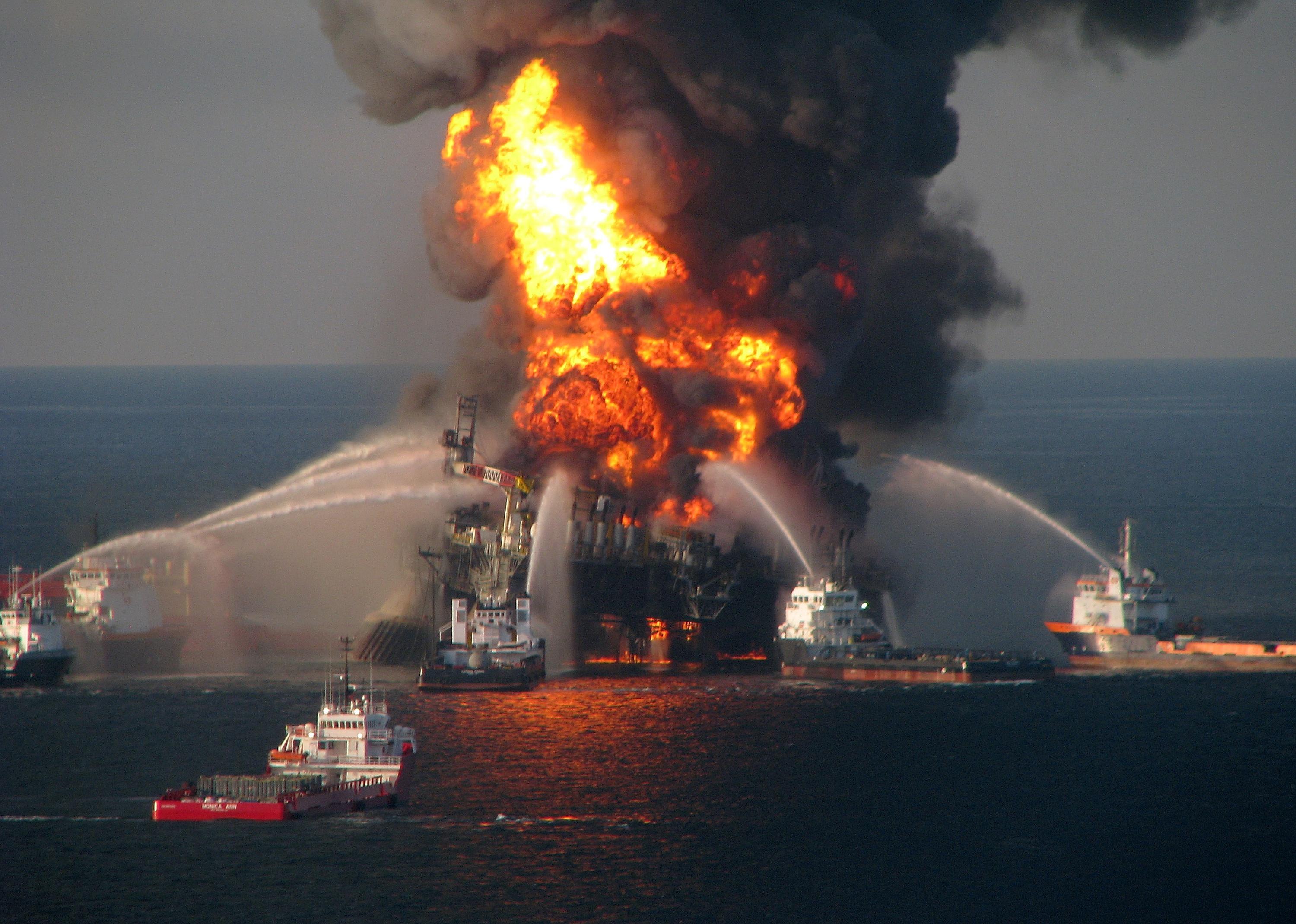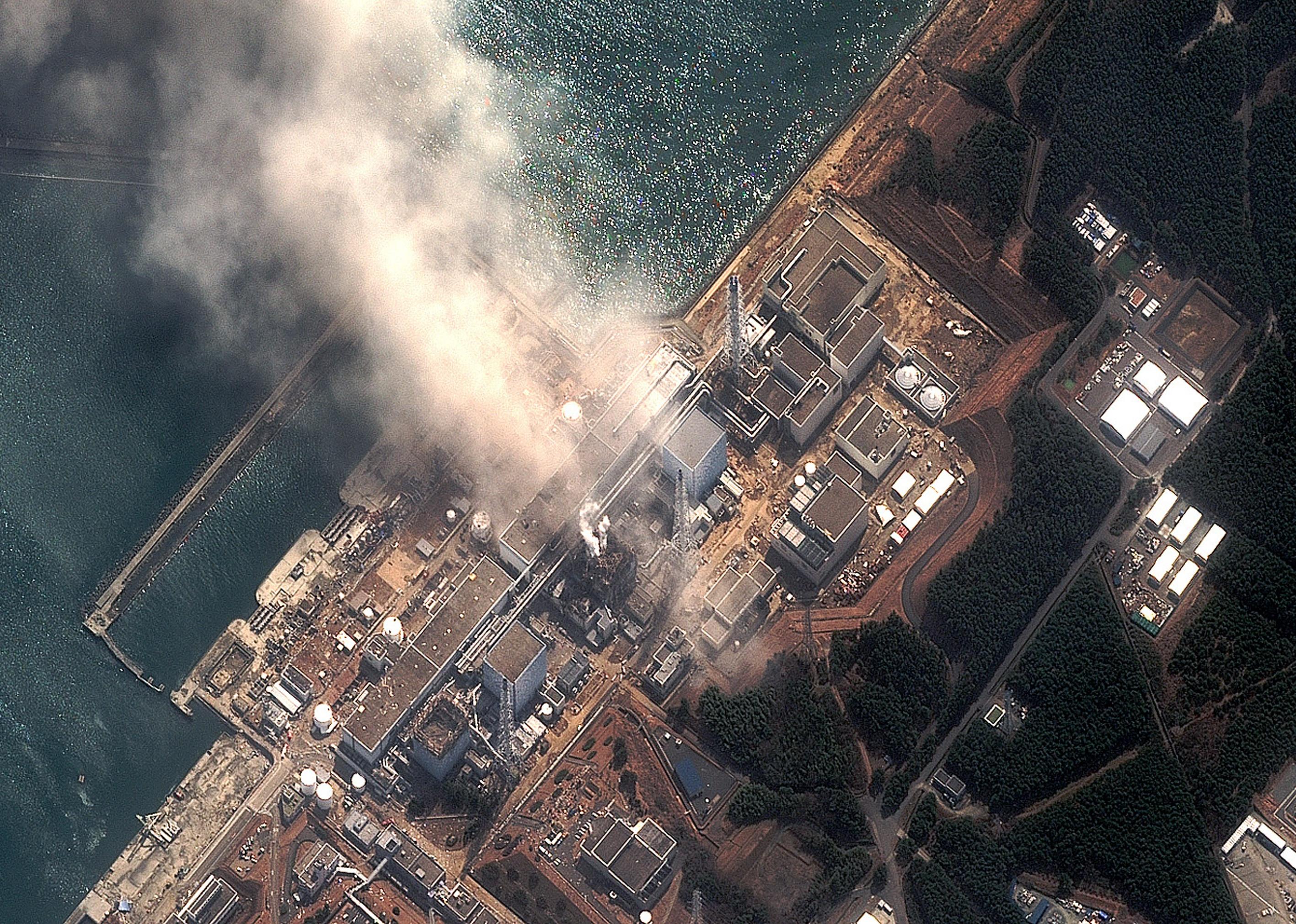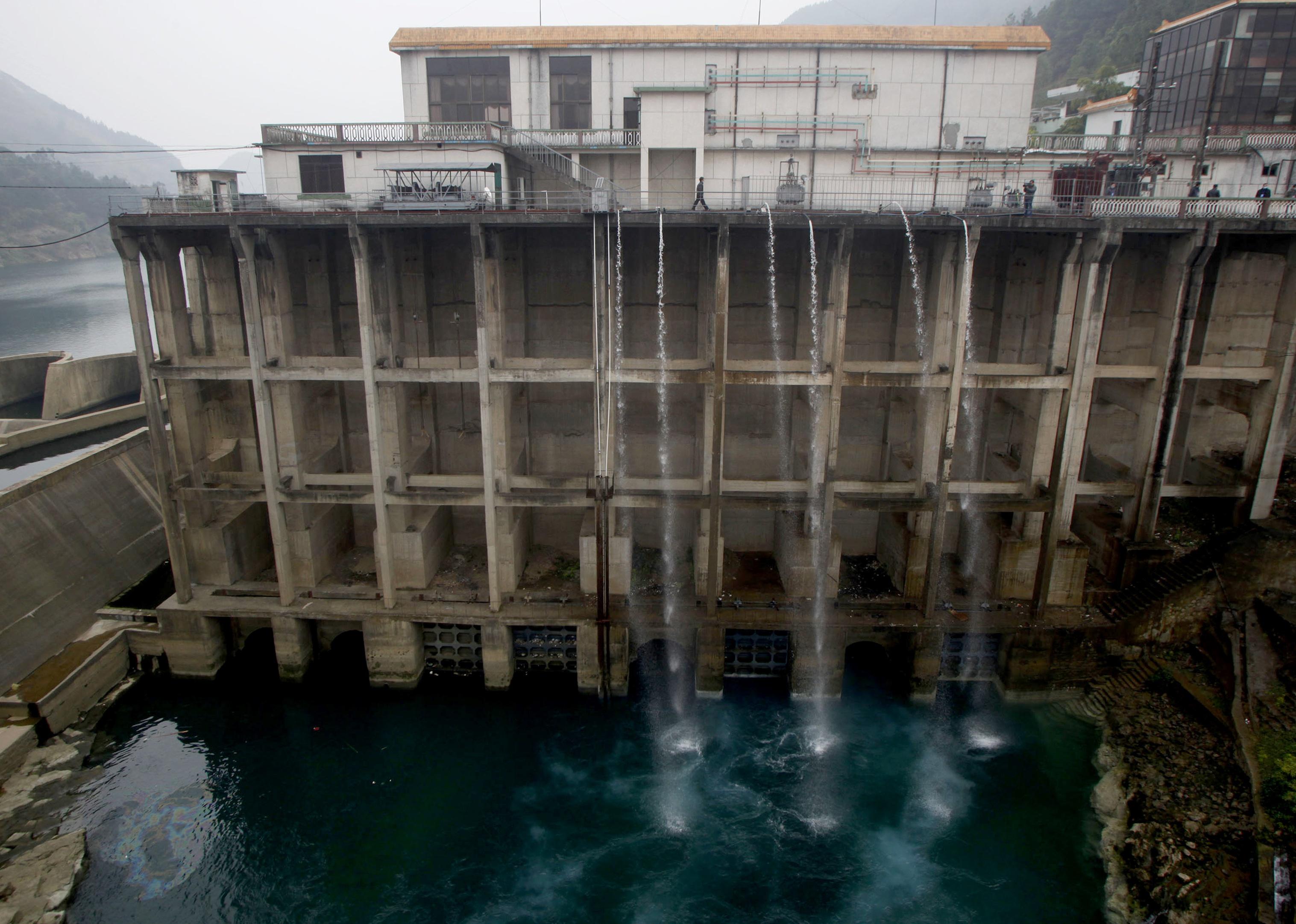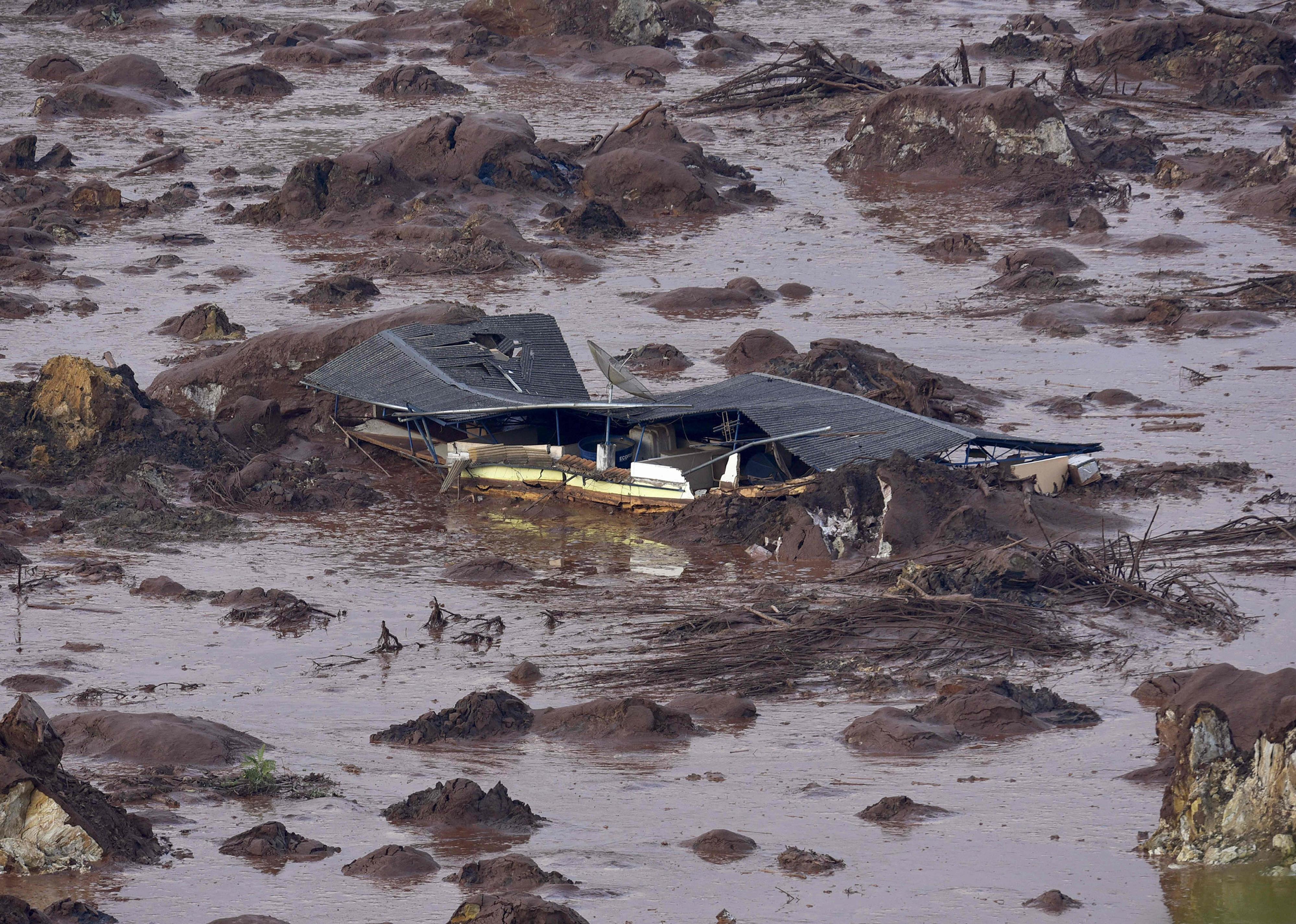20 of the biggest environmental disasters in history
Sean Gallup // Getty Images
20 of the biggest environmental disasters in history
A sign warns of radiation contamination near former apartment buildings.
Chernobyl, Fukushima, Deepwater Horizon, Exxon Valdez—these names live in the collective global consciousness as warnings about what can happen when we are careless stewards of our environment and negligent neighbors to our fellow man. While the long-term effects remain to be seen, for many Americans, the train derailment in East Palestine, Ohio—which resulted in mass toxic chemical spillage and the release of toxic fumes—will likely also live in infamy.
Industrial disasters around the world—many involving large corporations—have caused innumerable health, environmental, and economic damages. Failing to fix faulty equipment and infrastructure, to staff appropriately, or to spend money on proper waste disposal are just some of the many avoidable mistakes that have led to the worst disasters in human history. These incidents have also led to the necessary evolution of safety standards in mining, nuclear power, rail transportation, and other industrial operations.
The East Palestine train derailment bears many of the same hallmarks as other environmental disasters throughout history, particularly official reports not matching the lived experience of those residing in the aftermath of the disaster. Though the Environmental Protection Agency and state officials have not found signs of contamination in East Palestine’s air and water, residents have reported rainbow slicks atop creek water and an increase in symptoms, including headaches, cough, skin irritation, and fatigue.
The effects of these large-scale environmental disasters cannot be undone, but some survivors and advocates have won justice against corporations’ oversight and negligence. In many other instances, affected populations of every species are still suffering, while mistakes are allowed to repeat themselves.
Stacker compiled a list of 20 of the biggest environmental disasters in history to further investigate commonalities between these events and what can be learned to avoid them in the future.
You may also like: 25 endangered animals that only live in America
![]()
TFoxFoto // Shutterstock
Honkeiko colliery mining disaster (1942)
A black and white photo of an explosion.
Regarded as the worst mining disaster in human history, more than 1,500 people died when a mixture of methane gas and coal dust caused an explosion in an underground shaft. The mine’s ventilation system was closed off to contain the explosion, and as a result, the majority of fatalities were caused by carbon monoxide poisoning.
Mirrorpix // Getty Images
Great Smog of London (1952)
Fog and ice on Hampstead Heath.
A perfect storm of weather events led to smog so thick and toxic it killed at least 4,000 people—and some experts believe the death toll from respiratory illness was actually much higher. As residential homes burned large amounts of coal to contend with harsh winter temperatures, and industries belched pollutants from their normal production, a high-pressure weather system over London trapped a layer of air at ground level—air thick with soot and other harmful emissions. Visibility was dangerously reduced, halting all forms of transportation except the Tube.
Dhscommtech // Wikimedia Commons
Grassy Narrows mercury contamination (1960s)
Picture of Dryden Mill.
For nearly a decade, the Dryden Mill’s chloralkali plant discharged up to 24,000 pounds of mercury into the Wabigoon River. It is regarded as one of the worst cases of industrial pollution in Canada’s history. Many people in the Grassy Narrows First Nation and Whitedog First Nation communities were poisoned due to the contamination.
Owen Franken – Corbis // Getty Images
Three Mile Island accident (1979)
Sign at Three Mile Island Nuclear Plant.
A nuclear reactor at the Three Mile Island power station near Middletown, Pennsylvania, melted down on March 28, 1979, due to a failure in a separate part of the plant. The small amount of radiation released had no significant health effects on plant workers or the surrounding public. The Nuclear Regulatory Commission made more than a dozen policy and operational changes in the aftermath of the Three Mile Island accident to tighten safety standards at all nuclear plants.
Bettmann // Getty Images
Bhopal disaster (1984)
Men at Union Carbide Plant Entrance.
Between 15,000 and 20,000 people in Bhopal, India, died when dangerous methyl isocyanate gas escaped from a local insecticide plant. That plant was owned by the Indian subsidiary of the American firm Union Carbide Corp. The gas reached densely populated neighborhoods around the plant, killing thousands of people immediately. Hundreds of thousands were left with long-term health problems like respiratory issues and blindness. Investigations revealed that inadequate operating and safety procedures as well as understaffing led to the accident. Several former plant executives were convicted of negligence in 2010.
You may also like: U.S. cities with the cleanest air
Wojtek Laski // Getty Images
Chernobyl (1986)
Chernobyl nuclear power plant a few weeks after the disaster.
According to the International Atomic Energy Agency, a reactor at Ukraine’s Chernobyl nuclear power plant went out of control during a test, leading to an explosion and fire that released large amounts of radiation into the atmosphere. Two workers died in the explosion, and dozens more died in the months following due to acute radiation sickness. Long-term effects, such as high rates of cancer in children, have been documented as likely correlating to radiation exposure. A 20-mile radius around the plant is now an “exclusion zone” and is essentially uninhabited. The fallout spread across most of the Northern Hemisphere but in insignificant quantities.
Louis Atlan/Sygma // Getty Images
Exxon Valdez oil spill (1989)
Teams of firefighters cleaning the Alaskan coast following the Exxon Valdez oil spill.
In March 1989, the Exxon Valdez oil supertanker ran aground, spilling 11 million gallons of oil into Prince William Sound, Alaska, resulting in one of the biggest environmental disasters in U.S. history. The spill impacted more than 1,300 miles of shoreline and many regional wildlife populations. More than three decades later, some species have still not recovered in the affected areas. Exxon settled and paid out $25 million in a criminal plea agreement, $100 million in criminal restitution, and nearly $1 billion in a civil settlement.
WALT FRERCK/AFP // Getty Images
Phillips disaster (1989)
Flames and smoke pour from the Phillips 66 Chemical Plant in Houston.
The Phillips disaster in Pasadena, Texas, resulted from human error and a large release of flammable gases. Isolation valves were closed, and compressed air hoses were physically disconnected as part of routine reactor maintenance. However, they were reattached in reverse. While operators believed the valves were closed, they were actually open. As a result, more than 85,000 lb of highly flammable gases were released almost instantaneously. The gas ignited moments later and led to a series of cascading, catastrophic explosions. The disaster killed 23 employees and injured 314.
Asabist // Wikimedia Commons
Ufa train disaster (1989)
VL10-901, one of the locomotives involved in the Ufa train disaster.
A faulty pipeline that leaked natural gas, weather conditions that allowed the gas to spread and accumulate, and a single spark led to a train explosion along the Kuybyshev Railway in the Soviet Union. The explosion killed 575 people and injured 800. Unofficial reports put the death toll closer to 800. The explosion had an estimated force equivalent to 10 kilotons of TNT.
MostlyDeserts // Wikimedia Commons
Cantara Loop derailment (1991)
Site of the 1991 Cantara Loop spill.
A train derailment caused a “string line” that resulted in a chemical tank car dumping 19,000 gallons of an herbicide called metam sodium, which is used to sterilize soil for agricultural use, into the Sacramento River. The chemical impact extended over 20 miles from the site to Lake Shasta. A toxic cloud of the chemical compound also formed above and traveled up the river. As a result, millions of species integral to the ecosystem, including fish and aquatic invertebrates, were killed. Hundreds of thousands of trees died from the toxic cloud.
You may also like: How long it takes 50 common items to decompose
Stefania Zamparelli // Wikimedia Commons
Nambija mine disaster (1993)
A View of the Gold Mine Village of Nambija.
The Nambija mine disaster was caused by a landslide in a gold-mining settlement in southeastern Ecuador following months of heavy rains, burying an unknown number of people. While death toll estimates are around 300, no official records exist of how many people worked at the mine.
Jean-Pierre REY // Getty Images
Baia Mare Cyanide spill (2000)
Cyanide pollution in the Danube In Baia Mare, Romania.
On Jan. 30, 2000, a dam containing toxic waste from the Baia Mare Aurul gold mine in Romania burst and released 100,000 cubic meters of wastewater heavily contaminated with cyanide. More than 1,200 miles of water catchments along the Danube River were impacted by the spill. Hundreds of thousands of fish throughout Hungary, Serbia, and Romania were killed. On Feb. 10—11 days after the accident—cyanide levels in drinking water wells in Romania were 80 times the amount considered safe by the World Health Organization.
Flashdark // Wikimedia Commons
Martin County coal slurry spill (2000)
Wolf Creek on October 22, 2000.
Documented and unaddressed structural deficiencies at the Martin County Coal Corp. led to more than 300 million gallons of slurry being released into the Wolf Creek and Rockcastle Creek watersheds of Martin County, Kentucky. The slurry contained unsafe chemicals, including arsenic and mercury. The spill impacted more than 75 miles of surface water downstream of the site, including tributaries of the Ohio River. Investigators on site claimed the slurry killed everything in the streams.
Bernard Bisson // Getty Images
Toulouse chemical factory explosion (2001)
Fireman on site of the explosion at the AZF Chemical Plant.
An explosion at the AZF chemical plant in Toulouse, France—a nitrogen fertilizer factory that housed more than 300 metric tons of ammonium nitrate refuse—killed 31 people and injured more than 2,000. The explosion was so strong it measured 3.4 on the Richter scale. While the exact cause of the explosion was never determined, a long, complex chain of substandard safety conditions and negligence was found to be a contributing factor. On Sept. 24, 2012, the company and its former director were found guilty of involuntary homicide and injuries due to “clumsiness, carelessness, negligence, recklessness or breach of a duty of safety.”
ISSOUF SANOGO // Getty Images
Ivory Coast toxic waste dump (2006)
Men protect themselves from the smell in front of a dump in an Abidjan district.
Oil trading company Trafrigura was responsible for illegally offloading toxic waste—misrepresenting it as routine slop, or water waste—in and throughout the Port of Abidjan in the Ivory Coast. More than 100,000 people exposed to the waste sought medical help for neurological complaints such as headaches and blackouts, as well as respiratory problems, plus skin and digestive concerns.
You may also like: The 90 companies responsible for two-thirds of historical greenhouse gas emissions
Brian Stansberry // Wikimedia Commons
Kingston coal ash spill (2008)
A 25-foot wall of ash near the site of the disaster.
When a dike used to contain coal ash at the Tennessee Valley Authority Kingston Fossil Plant failed, approximately 5.4 million cubic yards of coal ash (equivalent to billions of gallons) were released into nearby waterways. Coal ash contains dozens of natural heavy metals, as well as more harmful toxins such as arsenic, cadmium, lead, vanadium, and chromium, as well as radioactive uranium and radon.
Dozens of the workers responsible for the cleanup have died from brain cancer, lung cancer, leukemia, and other diseases. Those still alive are suffering long-term health effects. No health effects were reported among local residents, and tests from various agencies and groups, including the EPA, found no water contamination.
U.S. Coast Guard // Getty Images
Deepwater Horizon oil spill (2010)
Fire boat response crews battle the blazing remnants of the off-shore oil rig.
The Deepwater Horizon oil spill is known today for being the largest marine oil spill in history. It was caused by an explosion on the Deepwater Horizon oil rig—located roughly 41 miles off the coast of Louisiana in the Gulf of Mexico—due to a surge of natural gas that broke through the concrete core meant to seal the oil well. The natural gas ignited when it reached the rig, killing 11 workers, injuring 17, and eventually sinking the rig.
Oil company BP, which was leasing the Deepwater Horizon rig, originally estimated the amount of oil spilling into the Gulf to be about 1,000 barrels per day. U.S. government officials reported the flow peaked at more than 60,000 barrels per day. Hundreds of thousands of animals were killed as a result of the spill, including sea turtles, birds, fish, marine mammals, and invertebrates.
DigitalGlobe // Getty Images
Fukushima (2011)
The Fukushima Daiichi Nuclear Power plant after the earthquake and subsequent tsunami.
The nuclear disaster at the Fukushima Daiichi Nuclear Power Plant in Ōkuma, Japan, is believed to have been caused by the Tōhoku earthquake—the most powerful earthquake ever recorded in Japan. The earthquake triggered a powerful tsunami that damaged the plant’s emergency generators, leading to a power outage. This resulted in the most severe nuclear accident since Chernobyl. Only one death was recorded as a result of the accident after an exposed worker later died of lung cancer.
STR // Getty Images
Guangxi cadmium spill (2012)
Polyaluminium Chloride flowing through the Nuomitan power station to dilute cadmium-polluted water.
A discharge of cadmium—a known cancer-causing carcinogen—from the Jinhe Mining company polluted two rivers in southern China, primarily in the Guangxi region. In one month, 20 metric tons of toxic cadmium metals were dumped, creating a toxic slick that stretched more than 60 miles along the Longjiang River, driving cadmium levels to five times above the national standard. The spill forced the stoppage of the water supply to 3.7 million people in Liuzhou.
DOUGLAS MAGNO // Getty Images
Mariana dam disaster (2015)
A general view where a dam burst in the village of Bento Rodrigues.
In November 2015, the Fundão tailings dam at Brazil’s Samarco Mariana Mining Complex suffered a failure, resulting in flooding that devastated villages downstream, killing 19 people. The damage caused by the dam collapse and iron ore waste made it the worst environmental disaster ever recorded in Brazil. The ore-laden muddy waste traveled more than 300 miles across two Brazilian states, polluting the region’s key river, the Rio Doce, and leaving hundreds homeless.
You may also like: Beginner’s guide to composting

